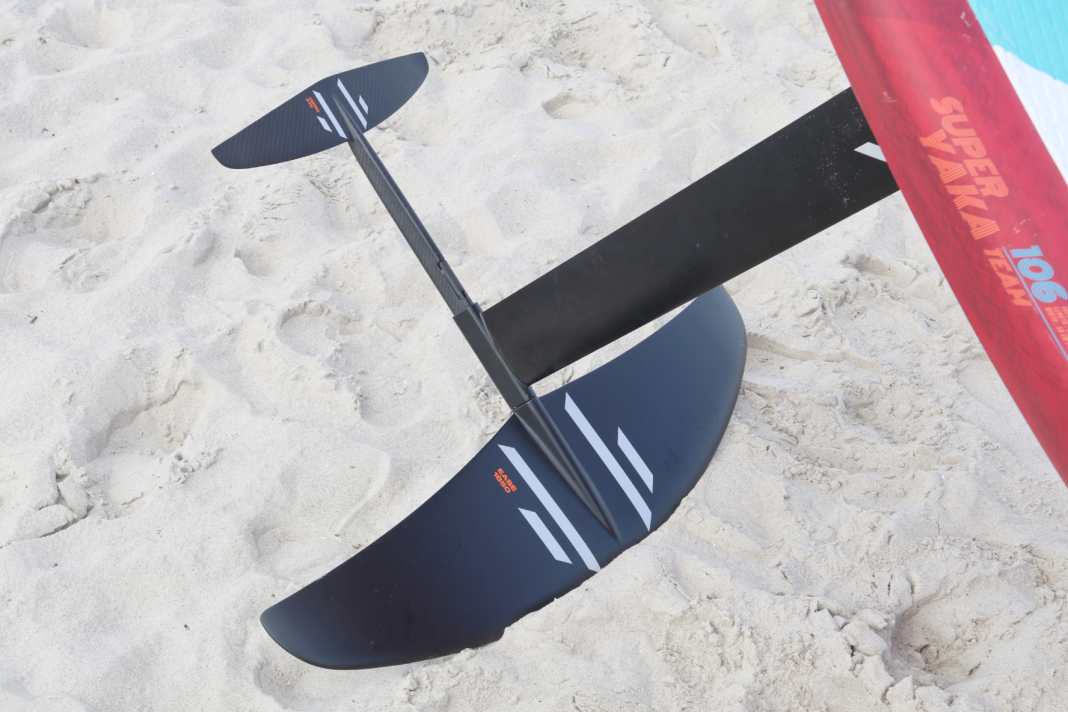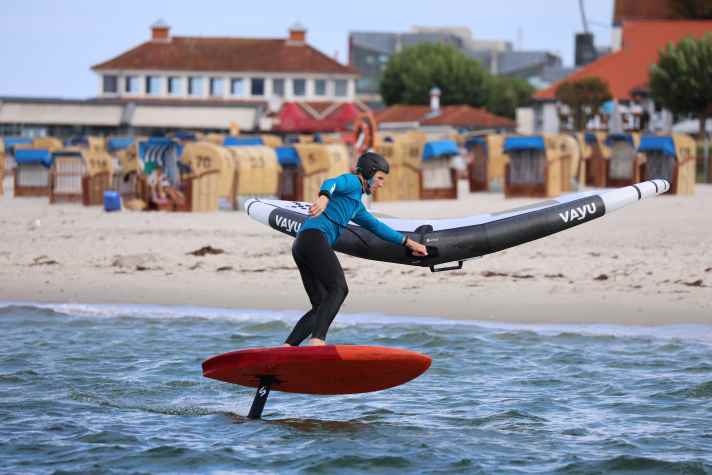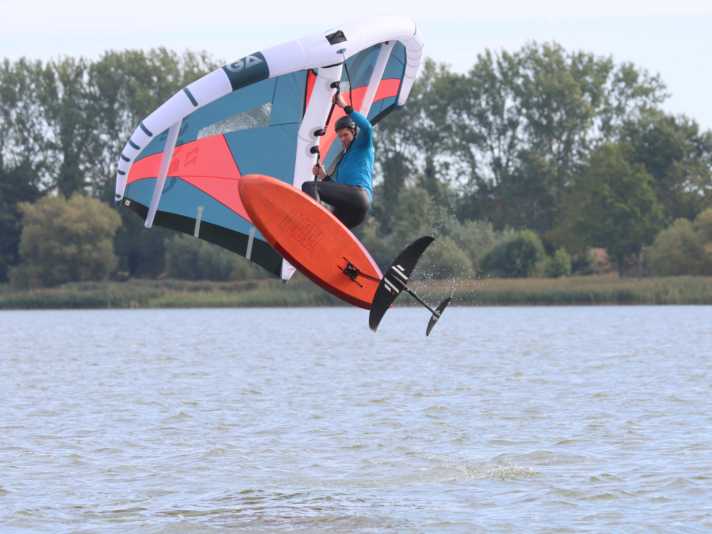





US manufacturer Slingshot offers the Ease Frontwing in four sizes - with 1250/1550/1850 and 2250 cm2. We were able to test ride the large 1850 cm2 wing extensively.
On land
The Ease Frontwings are said to be the easiest wings in the Slingshot range to ride and are therefore particularly suitable for foil novices and freeriders. Since this season, Slingshot has been offering the One-Lock a system in which all front and back wings of the brand can be mounted and exchanged in a matter of seconds. The wings are firmly attached to a part of the fuselage, these are simply brought together in a holder on the mast and pressed together with a quick release.
We show you how the One-Lock system works here:
The Ease 1850 wing has a relatively low aspect ratio of 5.4 - in other words, it has a relatively small span (99 centimetres) in relation to its surface area. The profile is comparatively thick in order to guarantee a stable airflow even at low speeds. The 1850 wing is ideally combined with the One-Lock Verse 270 Stabiliser. The total length of the fuselage, measured from the leading edge of the front wing to the trailing edge of the stabiliser, is then 77.5 centimetres. No other system is so quick to fit, just make sure that the quick release always has enough tension. Especially when using it for the first time, it can happen that the tensioning mechanism stretches a little - so check it regularly at the beginning to make sure it is tight and readjust it using the small adjustment screw if necessary!
We tested the Slingshot Ease 1850 in combination with an 82 mm aluminium mast, the set then costs 1417 euros. Of course, it is also possible to combine it with a carbon mast - the surcharge for this is 680 euros. In any case, matching covers for the wings are included in the scope of delivery.

On the water
It is immediately noticeable that the Slingshot Ease 1850 requires a very low take-off speed. The take-off is predictable and harmonious, even at the lowest wind limit the wing does not abruptly set down, but returns to the water surface in a controlled descent. Once lifted off, the Ease lives up to its name: it is extremely stable, especially around the transverse axis, thanks to the long fuselage, and the flight altitude can be stabilised very easily even with little skill. Anyone who now thinks that the Slingshot Ease 1850 is a boring wing for beginners only is mistaken (at least a little), because the moderate wingspan means that the foil can be used to fly smooth radii. Tacks, fast jibes or foil 360s are wonderful with the Ease 1850 and even if you lose (too) much speed at the end of a manoeuvre, the thickly profiled wing remains in the air even at what feels like walking speed. Of course, the foil is limited in terms of its speed potential. If you push really hard, you will notice that the top speed is significantly more capped than, for example, on the sister model Glide (HERE is a test) the case. On the positive side, however, the Ease 1850 does not show an excessive tendency to rise uncontrollably even in strong gusts. Of course, the foil can also be used to surf swell waves, but to be honest it has to be said that foils with more elongated wing shapes, i.e. a higher aspect ratio, offer more potential for this. The long fuselage also prevents light-footed pumping at a higher frequency.

Slingshot Ease One-Lock Foil - the conclusion
The Slingshot Ease 1850 One-Lock Foil impresses as a very easy-to-ride foil with plenty of potential for light wind conditions. Thanks to its easy takeoff and good wind range, the wing is ideal for foil beginners, but is also perfect for freeriders looking for relaxed cruising and smooth foil manoeuvres. The Ease Foil is ideally combined with Midlength boards and powerful wings, then you are ideally equipped for light wind conditions. If you are focussing on jumping or downwind, you should choose a foil with more basic speed and glide - Slingshot has the Glide and Flow models in its range for this.
Control, easy takeoff, fast assembly system
Speed potential
-
Slingshot Ease One-Lock - technical data
- Test product: Slingshot One-Lock Ease 1850
- Front wing area: 1850 cm2
- Front wing span: 99 cm (aspect ratio 5.4)
- Back wing area (verse 270): 270 cm2
- Wingspan back wing: 40.5 cm
- Fuselage: Total length 77.5 cm
- Mast (aluminium): 82 cm
- Price test set: 1417 Euro
- Weight set (own measurement): 4.62 kg
- Scope of delivery: Cover; 3 mounting systems for mast
- Special features: Assembly possible without tools
- Info: To the website

